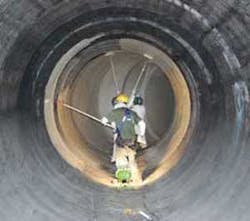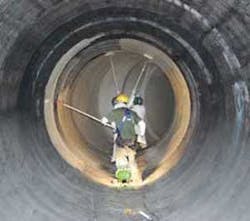Addressing Combined, Sanitary Sewer Overflows in the Urban Environment
Conference offers presentations on CSO/SSO control and more
According to Environmental Protection Agency (EPA) estimates, there are over 40,000 – and perhaps as many as 75,000 – sanitary sewer overflows (SSOs) in the United States each year, releasing anywhere from 3 billion to 10 billion gallons of untreated wastewater. SSOs can be caused by a number of factors such as severe wet weather and mechanical failures, resulting in serious water quality problems and posing a significant health threat.
Similarly, combined sewer systems, of which there are about 746 in 32 states, account for the release of about 850 billion gallons of untreated wastewater and stormwater each year. As a result, pathogens, solids, debris and pollutants make their way directly to surface waters, contaminating drinking water supplies and endangering the health of local watersheds.
CSO and SSO control is of paramount importance to water utilities across the nation. At the upcoming Urban Water Management Conference & Exhibition, taking place March 24-26, 2009, in Overland Park, KS, a number of presentations will explore this issue and what can be done to mitigate or even prevent overflow scenarios.
“Go with the Flow: Using Standby Lift Stations in Environmentally Sensitive Lands” will discuss how Pasco County (FL) Utilities Services Branch, in response to an in-kind benefit project solution resulting from an enforcement action, elected to take advantage of standby pumping to mitigate the possibility of future SSOs at environmentally sensitive locations throughout the county. The author will outline the plan requirements, compare implementation options (standby pumps versus standby generators), identify the pump model selection process, track the installation progress, and evaluate intended results over the course of the installation.
Another presentation will describe how the Kansas City Water Service Department Overflow Control Program (OCP) is currently developing a Long Term Control Plan (LTCP) designed to substantially reduce wet-weather overflows from both its combined sewer system (CSS) and separate sewer system (SSS) service areas. One area, the Blue River South basin, was identified as “high priority” for evaluation. Careful analysis and extensive modeling resulted in the identification of a solution comprising a combination of typical construction-intensive engineered solutions and “green” and “sustainable” infrastructure improvements – illustrating that investment in infrastructure improvement can be proven to be cost-effective as a wet weather solution.
Faced with the challenge of addressing CSO issues, the City of Saco, ME, adopted an approach that involved improving the transport and management of excess wet-weather flows by implementing advanced vortex technologies for both flow control and water quality improvement. In this presentation, the author will discuss the CSO treatment technology and provide an evaluation of post-construction operational and compliance monitoring results.
Urban Water Management 2009, sponsored by the National Association of Clean Water Agencies (NACWA), the City of Independence, MO, Water Pollution Control Department, the Kansas City Water Services Department, and the International Private Water Association (IPWA), will feature a comprehensive conference program exploring topical issues in the stormwater industry, including Best Management Practices, capital improvement planning, stormwater program management, low impact development, green infrastructure, regulatory and compliance issues, and much more.
For more information or to register, visit www.urbanwatermgt.com.

